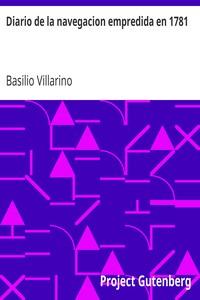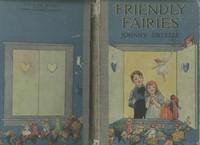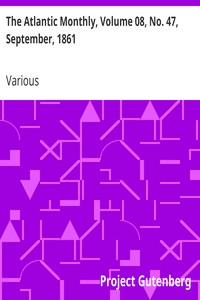Read this ebook for free! No credit card needed, absolutely nothing to pay.
Words: 140602 in 50 pages
This is an ebook sharing website. You can read the uploaded ebooks for free here. No credit cards needed, nothing to pay. If you want to own a digital copy of the ebook, or want to read offline with your favorite ebook-reader, then you can choose to buy and download the ebook.
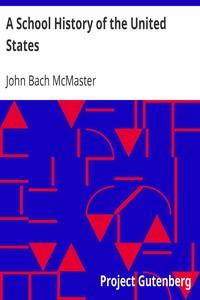

: A School History of the United States by McMaster John Bach - United States History Children's History; United States; Children's Instructional Books
CHAPTER
DECLARATION OF INDEPENDENCE CONSTITUTION OF THE UNITED STATES STATE CONSTITUTIONS INDEX
LIST OF IMPORTANT MAPS
A SCHOOL HISTORY OF THE UNITED STATES
EUROPE FINDS AMERICA
%1. Nations that have owned our Soil.%--Before the United States became a nation, six European powers owned, or claimed to own, various portions of the territory now contained within its boundary. England claimed the Atlantic coast from Maine to Florida. Spain once held Florida, Texas, California, and all the territory south and west of Colorado. France in days gone by ruled the Mississippi valley. Holland once owned New Jersey, Delaware, and the valley of the Hudson in New York, and claimed as far eastward as the Connecticut river. The Swedes had settlements on the Delaware. Alaska was a Russian possession.
Before attempting to narrate the history of our country, it is necessary, therefore, to tell
%2. European Trade with the East; the Old Routes.%--For two hundred years before North and South America were known to exist, a splendid trade had been going on between Europe and the East Indies. Ships loaded with metals, woods, and pitch went from European seaports to Alexandria and Constantinople, and brought back silks and cashmeres, muslins, dyewoods, spices, perfumes, ivory, precious stones, and pearls. This trade in course of time had come to be controlled by the two Italian cities of Venice and Genoa. The merchants of Genoa sent their ships to Constantinople and the ports of the Black Sea, where they took on board the rich fabrics and spices which by boats and by caravans had come up the valley of the Euphrates and the Tigris from the Persian Gulf. The men of Venice, on the other hand, sent their vessels to Alexandria, and carried on their trade with the East through the Red Sea.
%3. New Routes wanted.%--Splendid as this trade was, however, it was doomed to destruction. Slowly, but surely, the Turks thrust themselves across the caravan routes, cutting off one by one the great feeders of the Oriental trade, till, with the capture of Constantinople in 1453, they destroyed the commercial career of Genoa. As their power was spreading rapidly over Syria and toward Egypt, the prosperity of Venice, in turn, was threatened. The day seemed near when all trade between the Indies and Europe would be ended, and men began to ask if it were not possible to find an ocean route to Asia.
Now, it happened that just at this time the Portuguese were hard at work on the discovery of such a route, and were slowly pushing their way down the western coast of Africa. But as league after league of that coast was discovered, it was thought that the route to India by way of Africa was too long for the purposes of commerce. Then came the question, Is there not a shorter route? and this Columbus tried to answer.
His course led first to the Canary Islands, where he turned and went directly westward. The earth was not then generally believed to be round. Men supposed it to be flat, and the only parts of it known to Europeans were Iceland, the British Isles, the continent of Europe, a small part of Asia, and a strip along the coast of the northern part of Africa. The ocean on which Columbus was now embarked, and which in our time is crossed in less than a week, was then utterly unknown, and was well named "The Sea of Darkness." Little wonder, then, that as the shores of the last of the Canaries sank out of sight on the 9th of September, many of the sailors wept, wailed, and loudly bemoaned their cruel fate. After sailing for what seemed a very long time, they saw signs of land. But when no land appeared, their hopes gave way to fear, and they rose against Columbus in order to force him to return.
But he calmed their fears, explained the sights they could not understand, hid from them the true distance sailed, and kept steadily on westward till October 7, when a flock of land birds were seen flying to the southwest. Pinzon , who commanded one of the vessels, begged Columbus to follow the birds, as they seemed to be going toward land. Had the little fleet kept on its way, it would have brought up on the coast of Florida. But Columbus yielded to Pinzon. The ships were headed southwestward, and about ten o'clock on the night of October 11, Columbus saw a light moving in the distance. It was made by the inhabitants going from hut to hut on a neighboring coast. At dawn the shore itself was seen by a sailor, and Columbus, followed by many of his men, hastened to the beach, where, October 12, 1492, he raised a huge cross, and took possession of the country in the name of Ferdinand and Isabella, King and Queen of Spain, who had supplied him with caravels and men. He had landed on one of a group of islands which we call the Bahamas.
Free books android app tbrJar TBR JAR Read Free books online gutenberg
More posts by @FreeBooks

: Vain Fortune: A Novel by Moore George Greiffenhagen Maurice Illustrator - Inheritance and succession Fiction; Young women Fiction; Triangles (Interpersonal relations) Fiction; Dramatists Fiction; Unrequited love Fiction
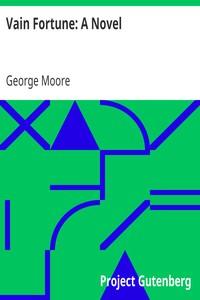

: Diario de la navegacion empredida en 1781 Desde el Rio Negro para reconocer la Bahia de Todos los Santos las Islas del Buen Suceso y el desague del Rio Colorado by Villarino Basilio - Argentina Discovery and exploration Argentina
